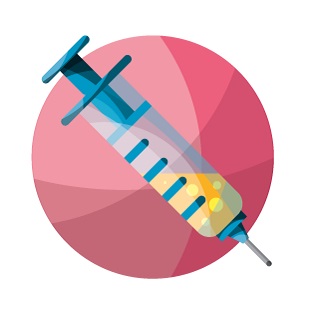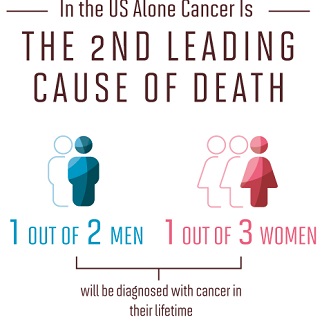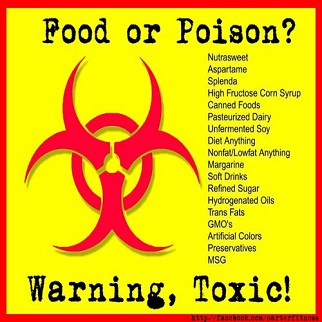Introduction

Cancer is one of the deadliest and most-feared diseases in the world. Despite many technological advancements and treatments available, a cure remains elusive.
With so many people suffering from various types of cancer, the obvious question is: Why haven’t we cured cancer yet?
To understand why cancer has not yet been cured, it is very important to grasp several fundamental factors.
First, cancer is not actually a single disease. In fact, it is a large family of at least 100 related but different diseases. Consider: Researchers studied breast cancer in the United Kingdom among 2,000 women. They found that ‘breast cancer’ – just one type of cancer as most understand it – is actually at least 10 different subtypes of cancer. However, most hospitals and treatment centers do not break down this type of cancer any further than ‘breast cancer.’ So, treatments often are not as targeted and as specialized as they could be.
Lung and bronchus cancer is the most deadly in the US from 2010-2014, with 44.7 deaths per 100,000 people. (American Cancer Society)
Second, cancer cells are heterogeneous. This simply means there are differences between individual cancer cells. For example, researchers a few years ago discovered that cells that were gathered from four parts of the same tumor actually were structurally different. Additional studies confirmed that cancer cells are frequently heterogeneous. Critically, cancer biopsies are often taken from only one part of a tumor. This has serious implications for improving cancer treatments. It also suggests that a single targeted therapy is unlikely to kill all of the cancer cells.
Third, cancer cells evolve. They divide and grow quickly, and endure substantial damage and stress to their DNA. Cancers that grow rapidly have a balance between damage to the DNA and repair, but these genetic shifts add up. The result is not dissimilar from warp speed evolution. Growth promoting mutations cause even quicker cancer cell expansion. This relates to the heterogeneity of cancer cells mentioned above. It also means that a cancer today could be very different from the cancer you try to treat in three months.
Today it is possible to track how cancer cells evolve. Changes can be sometimes predicted before they occur. But it is tough to hit a constantly moving target with even the most effective and targeted cancer therapies in existence.
Fourth, cancer cells feature structural variants, or SVs. These include deletions, inversions, insertions and duplications of parts of DNA. These changes do not change the DNA sequence really, but the consequences in terms of cancer treatment are major. SVs contribute to cancer cell genetic changes that can increase cancer tumor growth.
Fifth, cancer cells have the ability to evade the immune system. Or, they can suppress critical elements of the immune response that could kill the cancer. In some situations, our immune cells can infiltrate the tumor. But for reasons not well understood, the immune cells stop the attack on the cancer cells.
About one out of eight women in the US will develop breast cancer in her lifetime. (BreastCancer.org)
Research also has found that a chemical compound gets into the DNA of the cancer cell and can suppress certain genes from activating. This can make the cancer cells less likely to be attacked by our immune system. Thus, cancer cells may actually hide in full sight within our body, and the immune system cannot kill them.
The bottom line: Cancer is extremely complex, variable and consists of many types of related but different diseases.
Latest Cancer Statistics

Cancer has a substantial impact on American and worldwide society. This can be seen in many cancer statistics compiled in recent years. Cancer statistics show what occurs in large populations of people who are diagnosed with cancer and die from it. Statistics also represent the number of people who are still living after they were diagnosed were cancer, the typical age they were diagnosed, and people who still are living after diagnosis.
There are additional benefits to compiling statistics about cancer. Statistics can reveal differences among groups of people with cancer, according to criteria such as age, gender, ethnic group, location and more. Cancer statistics also can inform us about how many people suffer from specific cancer types. For example, the World Health Organization notes that there were 1.69 million deaths to lung cancer in 2015 around the world, the highest number of all cancers. There also were 788,000 liver cancer deaths; 774,000 colorectal cancer deaths; and 571,000 breast cancer deaths.
It is predicted there will be 23.6 million new cancer cases worldwide each year by 2030… This is 68% more cases than in 2012!! (GLOBOCAN 2012 v1.0, Cancer Incidence and Mortality Worldwide)
It is important to understand that statistical trends are not normally applicable to the individual patient. That said, cancer statistics are important for governments, healthcare professionals, policy makers and researchers to grasp. They can better understand how cancer affects the population, and develop effective strategies to defeat cancer. Statistical trends in this disease also are vital to measure current efforts at control and management of the disease.
- 6% of men and women are diagnosed with cancer in their lifetime in the United States.
- 15,780 children from zero to 19 were diagnosed with some form of cancer in 2014.
- 10-15% of people with lung cancer never smoked.
- One out of 16 Americans will have lung cancer in their lifetime.
- Cancer has been found in fossils as old as 1.7 million years. Osteosarcoma bone cancer once was found in a fossilized human toe.
- Early Egyptians in 3000 BC referred to cancer; an Egyptian scroll stated that there is no treatment for breast cancer.
- The term ‘carcinoma’ was first used in approximately 460 BC, when Hippocrates first used the word in his writings.
Cancer Cure Solutions

There are many ways to treat cancer. The sort of treatment you receive depends upon the specific type of cancer and how advanced it is. Some people only get one type of treatment, but most will get several. The most popular and conventional treatment plan for many cancers today is a combination of chemotherapy and radiation.
Chemotherapy is a conventional treatment that uses special drugs to stop cancer cell growth. These drugs can either kill the cells or stop them from dividing further. Chemotherapy may be administered by injection, mouth, infusion or on the skin.
Radiation therapy utilizes high energy radiation from gamma rays, x-rays, neutrons, protons and other sources to both shrink and kill cancer tumors. Radiation typically is generated from a machine outside of the body, but it also can be from radioactive material that is put near the cancer cells. Systemic radiation uses a radiolabeled monoclonal antibody that goes through the blood to attack the tumor.
Some cancer patients also choose to participate in clinical trials. There are often promising, new cancer therapies being studies that have not yet been approved by FDA. Some patients may find significant hope by participating in these trials.
More than 60% of new cancer cases in the world happen in Africa, Asia, Central and South America. (World Health Organization)
Beyond the typical cancer treatments of surgery, radiation and chemotherapy, there are other innovative treatments available. Many of these new treatments are still in development, but are showing great potential.
Some of the new therapies being used today are:
- Hormone therapy: Some hormones in the body help cancer cells to grow. In these cases, certain medications can interfere with the hormone, and/or stop it being produced.
- Proton therapy: This is one of the most promising potential replacements for regular radiation treatments. It directs proton beams at the tumor rather than x-rays. It features a tighter beam that can be controlled in three dimensions. This means there is less lateral scatter, eliminating much of the tissue damage of traditional radiation.
- Liposomal therapy: This takes current chemotherapy drugs and puts them inside liposomes, which are synthetic fat globules. The liposome assists the drug in penetrating cancer cells.
- Biologic therapy: This type of therapy produces antitumor effects through the stimulation of defense mechanisms, or through the use of immune system components.
- Angiogenesis inhibitors: Prevents forming of new blood vessels so that the tumor cannot grow.
- Radiofrequency ablation or RFA: Insertion of thin needle through the skin and into the tumor. Electricity is delivered through the needle, heating and destroying cancer cells.
Some therapies that are in clinical trials at this time:
- Telomerase therapy: Malignant cells grow because cell death or apoptosis is shut off. A drug that stops telomerase could be helpful to stop the growth of tumors.
- Molecular targeted therapy: Attacks the molecular components in the cell signaling pathways that work to support the survival and growth of the tumor.
- Reovirus therapy: Uses five days of IV injections with a special type of virus that is found naturally. The virus attacks cells that encourage the growth of cancerous tumors.
Cancer treatments still on the horizon include:
- RNAi: This is genetic medicine that is applied at the point where the cancer begins. It deals with shutting off the messenger RNA that carry the bad genetic data before the RNA can do harm.
- Nanobubbles: This delivers cancer fighting drugs in tiny packets of nanoparticles to the cancerous tumor. Ultrasound then is used, which pops the bubbles and releases the drug.
- Hyperthermia therapy: This involves using various types of heat to kill or shrink the tumor. Some of the possibilities being explored are induction, microwave, and magnetic hyperthermia heating.
Also, one of the most promising types of cancer therapies is the movement towards personalized cancer treatments, and away from general cures.
Vaccines are being developed that will prompt our immune system to fight the cancer. Viruses can be reprogrammed to target cancer cells and to attach to them. This can trick the immune system into thinking there is a real, live virus in the body. Early clinical trials have found that these vaccines can kill and remove cancer cells from the body.
Immunotherapy also is being used to produce new biological agents that can imitate the immune response to a cancer manifestation. Biological agents that are already in the body can be reproduced in the lab. They then are injected into the growing cancer cells to imitate the immune response. Then, they can reduce the growth of cancer cells, or assist healthy cells in controlling cancer cells.
Targeted therapies also are being developed to attack what drives the cellular mechanisms of several types of cancer. These therapies include these factors:
- Growth signal inhibitors that block the ability of cells to divide and multiply
- Angiogenesis inhibitors that make tumors stop from creating blood vessels needed for additional growth
- Apoptosis inducing drugs that encourage cancer cells to die naturally
Big Pharma’s Role

Treating cancer is a major money-making business in the US. Some estimates are that more than $200 billion is made in fighting cancer each year by Big Pharma. However, most cancer therapies fail – as many as 98% of them by some claims. Some experts argue that pharmaceutical companies only are interested in potential cures that can be patented – make the company money. Some claim that there are natural cancer cures that show promise, but are never invested in because there is not a strong profit to be made.
According to the Daily Beast, an associate professor of medicine at Harvard Medical School has been attempting for years to raise cash for clinical trials on how aspirin can affect breast cancer. Animal studies have shown promise for breast cancer. But most experts on scientific advisory boards appear to have little interest. She claims that drugs that can be patented get a randomized trial, but an aspirin study is never done because ‘it’s 99 cents at CVS.’
To get a true idea of the financial incentives at play with Big Pharma and cancer cures, review this list of pharmaceutical companies and the money they made from their patented cancer drugs in 2014:
- Roche: $2.5 billion
- Novartis: $1.02 billion
- Celgene: $748.5 million
- Johnson & Johnson: $399.1 million
- Bristol-Myers Squibb: $353 million
- Eli Lilly: $339.4 million
- Takeda: $326.5 million
- Astrazeneca: $293.7 million
- Merck: $269.6 million
- Amgen: $205.7 million
- Pfizer: $202.2 million
- Astellas: $191.3 million
- Bayer: $148.3 million
- Sanofi: $123.7 million
9 out of 10 oncologists in one study said they would refuse chemotherapy due to its risks. (CureYourOwnCancer.org)
Why would multi-billion dollar pharmaceutical companies that make this type of money from patented cancer drugs want to encourage the development of cancer cures where there is little profit to be made? On the flipside, there are also certain myths debunking this as seen below.
Featured Youtube Video
In this video, you’ll learn that hand in hand with the idea that there is a cornucopia of ‘miracle cures’ is the idea that governments, the pharmaceutical industry and even charities are colluding to hide the cure for cancer because they make enough money from existing treatments. Whatever the particular ‘cure’ being talked about, the logic is usually the same: it’s readily available, cheap and can’t be patented, so the medical establishment is suppressing it in order to make money. It’s important to point out that some cancers can already be cured. And there’s no conspiracy, developing and trialling new treatments costs money and sometimes these treatments don’t work.
So is it true? Could Big Pharma be playing a role in the difficulty of developing cancer cures? The fact remains, there is definitely no financial incentive for these companies to invest millions of dollars into clinical studies on non-patentable drugs. Next up let’s hear what these experts think about curing cancer.
Recap of Cure for Cancer

The odds are high that you or a loved one will have cancer at some time in your lives. Around the world, cancer kills one out of six people every year. There were nearly 9 million deaths related to cancer in 2015. And there are millions of new cancer cases every year.
But there is hope. Much progress has been made to treat cancer. The US and other countries have devised innovative treatments to fight many subtypes of cancer. We have cutting edge cancer treatment facilities, such as the Mayo Clinic in St. Paul, Minnesota, and the Rush University Cancer Center in Chicago, Illinois. Millions of dollars is put into cancer research every year. Still, a cure for cancer eludes us.
The major problem is that the many different facets of the different types of cancer cannot be easily addressed with simple advances in cancer treatment technologies. There are many different types of cancer, people react differently to different treatments, so developing a one size fits all cure will probably always remain difficult.
That said, there is no reason to despair. New treatments are being developed every day to fight cancer. We are devising technology that can reduce the pain and improve the quality of life for cancer patients. Scientists also are coming up with new ways to eradicate some aspects of the disease. Plus, cancer mortality rates and life expectancies are on the rise.
Patients diagnosed with cancer from ages 50-64 from 2005-2009 had a 39%-68% lower chance of death from those cancers within five years, compared to people of the same age diagnosed from 1990-1994. (Reuters).
So while a total cure for the disease is unlikely, it is very reasonable to expect that major strides will continue to be made in coming years to reduce the impact of many forms of cancer.
Help Us Spread the Word
Sharing is definitely caring! Help us share more of these great facts and statistics on your website or research report. Easily copy and paste the special embed code below this graphic and paste the same great graphic into your webpage! It’s super easy It’s super easy give it a try.
Data Sources & References
- Understanding Cancer Statistics. (n.d.). Retrieved from https://www.cancer.gov/about-cancer/understanding/statistics
- Cancer Myths. (n.d.). Retrieved from https://www.cancertutor.com/cancer-myths/
- How Big Pharma Holds Back the War on Cancer. (n.d.). Retrieved from http://www.thedailybeast.com/how-big-pharma-holds-back-in-the-war-on-cancer
- The Fraud and Mythology of Conventional Cancer Treatments. (n.d.). Retrieved from https://www.cureyourowncancer.org/exposing-the-fraud-and-mythology-of-conventional-cancer-treatments.html
- Why No Cure for Cancer. (2015). Retrieved from https://www.jax.org/news-and-insights/2015/december/why-no-cure-for-cancer
- Top 25 Pharma Companies by Oncology Sales. (n.d.). Retrieved from http://www.pmlive.com/top_pharma_list/oncology_revenues
- Breast Cancer Is Not One Disease But 10 Distinct Diseases. (n.d.). Retrieved from https://www.cbsnews.com/news/study-breast-cancer-not-one-disease-but-10-distinct-diseases/
- GLOBOCAN 2012 v1.0, Cancer Incidence and Mortality Worldwide. (n.d.) Retrieved from (2015). http://globocan.iarc.fr/Pages/fact_sheets_cancer.aspx








What the Experts Say
Many believe that serious progress has been made so far to cure cancer, but there is little doubt that plenty of work remains ahead of us. The quotes below from noted researchers and others give a hint of the progress made, the controversies, and the hope for the future to cure cancer.